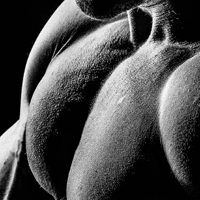Studying the male animal
Sidebar from: Fifty shades of men
Men and mass violence

From École Polytechnique in 1989 and Dawson College in 2006, both in Montreal, to Colorado’s Columbine High School in 1999 and Connecticut’s Sandy Hook Elementary School in 2012, most of North America’s mass shootings have been committed by men.
Meriem Rebbani-Gosselin, BA 12, wants to understand why. “My research aims to look into these events as staged performances where conflicted ideas of power, masculinity and violence are played out,” says Rebbani-Gosselin, whose research in the Department of Sociology and Anthropology is supervised by Professor Marc Lafrance.
School shootings and mass murders have been explored at great length by media, with journalists discovering that most shooters were bullied as children or suffered from previous mental illness. Yet a grey zone exists that requires further examination — specifically the impact of sociocultural influences on men. She is building on previous research to explore how imagined attacks on a frailly constructed masculine identity might have a devastating effect on some young men in contemporary Western cultures.
Boys and their bodies
Male bodies are increasingly objectified in mass media, which might send young men running to gyms or fretting before mirrors, right? Not quite. Moss E. Norman, who led a study on boys and their bodies as a postdoctoral fellow at Concordia’s Simone de Beauvoir Institute, found most young men want to be average. “Not all boys aspire to have the lean, muscular or idealized male bodies that are commonplace in popular culture,” he says.
Published in the journal Men and Masculinities, his study garnered intelligence from focus groups and interviews with 32 boys conducted over a nine-month period. Participants aged 13 to 15 provided opinions about male bodies, health, diet and physical activity. “Boys who took part in this study were staunchly critical of idealized male images,” says Norman, now a professor at the University of Manitoba. “They found it problematic, feminine or vain to be overly concerned with appearances. Sculpted bodies were seen as unnatural, the product of steroids or zealous weightlifting.”
A surprise from his research, says Norman, was how comfortable boys were in expressing, analyzing and comparing bodies — “their own, their peers’ and those ideals depicted by media. Although they felt pressure to be fit, they displayed a distant, disinterested and cool relationship to their bodies.”

Manhood in advertising

After making national headlines for his undergraduate research on how pornography can foster body dissatisfaction among heterosexual men, Casey J. Scheibling turned his attention to advertisers who manipulate male ideals: “Objects are advertised as enhancing masculinity.”
He says men are increasingly marketed products that can modify or beautify their bodies — products once the purview of women. “A question that arises is whether or not this transition in Western consumer culture is a result of rising gender equality or the blurring of the gender lines,” asks Scheibling, BA 12, whose research is supervised by Lafrance.
While gender-driven shifts in marketing represent a break with gender stereotypes, he’s found that modern advertisers favour old-school approaches in marketing. “Objects and products for men are fetishized to reinforce traditional masculinity,” says Scheibling. “They are presented as powerful, heterosexual and anti-feminine.”
Putting the alpha in athletics
After making national headlines for his undergraduate research on how pornography can foster body dissatisfaction among heterosexual men, Casey J. Scheibling turned his attention to advertisers who manipulate male ideals: “Objects are advertised as enhancing masculinity.”
He says men are increasingly marketed products that can modify or beautify their bodies — products once the purview of women. “A question that arises is whether or not this transition in Western consumer culture is a result of rising gender equality or the blurring of the gender lines,” asks Scheibling, BA 12, whose research is supervised by Lafrance.
While gender-driven shifts in marketing represent a break with gender stereotypes, he’s found that modern advertisers favour old-school approaches in marketing. “Objects and products for men are fetishized to reinforce traditional masculinity,” says Scheibling. “They are presented as powerful, heterosexual and anti-feminine.”

Male nudity on screen

Over the past three decades, Hollywood has increasingly dropped the towel on frontal male nudity. As part of his master’s thesis, Timothy Eric Smith, MA 12, examined Hollywood comedies produced between 2006 and 2011. “Contemporary Hollywood ‘dude flicks’ have started to put the penis on screen,” contends Smith, who completed his thesis under the direction of Professor Thomas Waugh of Concordia’s Mel Hoppenheim School of Cinema.
Showing male nudity has allowed actors, directors and producers to break new ground and push boundaries. Smith says full frontal has crossed over to TV. “By presenting the penis in mainstream North American cinema [and television], particularly in comedies, directors are forcing their audiences to deal with their insecurities about full-frontal male nudity,” he says.